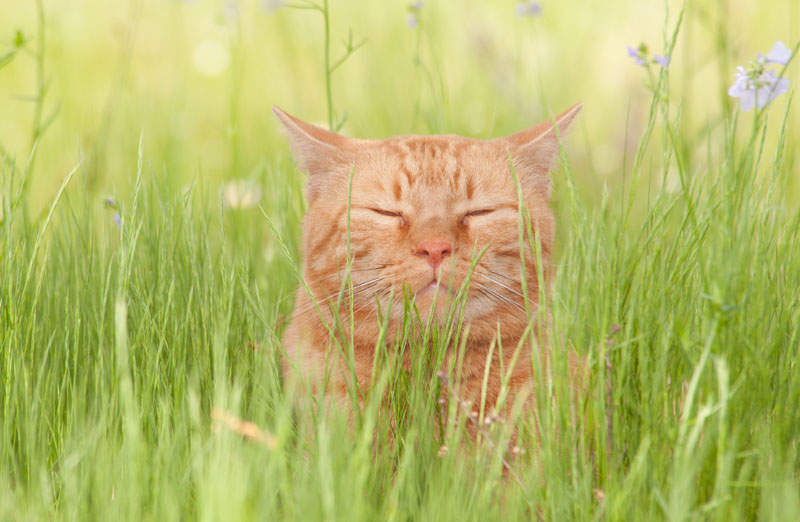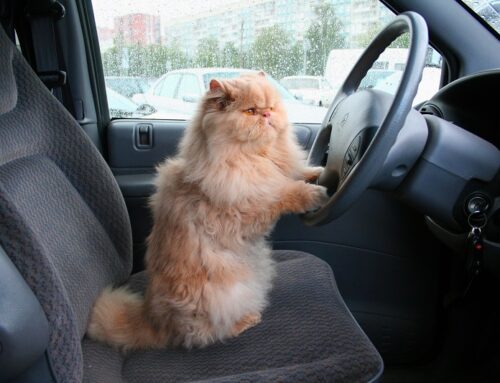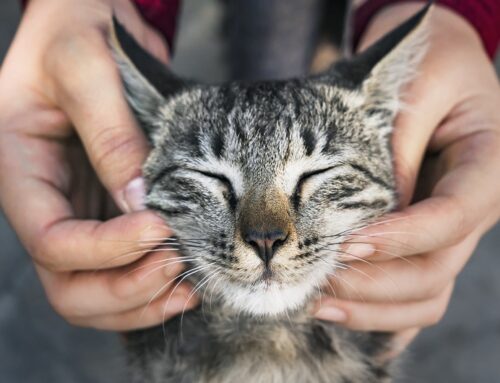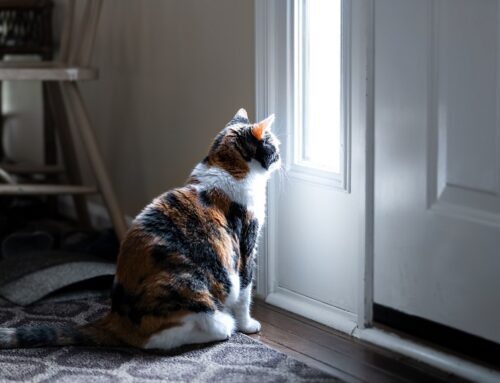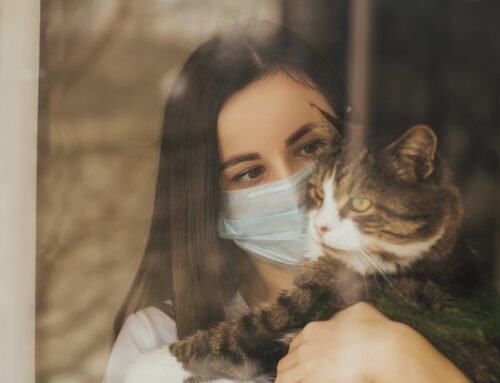I have seen it written that a healthy cat is a happy cat, but the converse is also true: a happy cat is a healthy cat. Just like humans, cats need stability in their life. It has recently been shown that animals can suffer from PTSD and that chronic stress can affect their immune system and overall health. Signs of the chronically stressed cat are not always readily apparent, however, some obvious signs that a cat is stressed are urinating outside the litter box, pulling out fur or overgrooming.
Some chronically stressed cats can also exhibit less severe signs of stress, such as always hiding, running away from loud noises, not being social and not being playful. These cats are usually described as “fraidy cats”. Unfortunately, many people with these cats assume this is “normal” for their cat and don’t pursue treatment.
In 1943, a human psychologist, Abraham Maslow, proposed a pyramid-shaped organization of needs to describe how people are motivated to meet certain needs. This pyramid is called “Maslow’s Hierarchy of Needs” and contains five levels. It has recently been proposed that animals also have a pyramid of needs, with theirs containing four levels instead. As with any structure, you cannot build up to a higher level until the underlying layers are stable.
The first (base) layer of needs for cats is “Physiological and Safety.” The most important thing to a cat is its territory. This is the environment in which a cat feels safest and provides everything it needs: food, safety from predators, and a place to raise its young. Cats are complete “control freaks,” and they do not share well with other cats. They need to feel that they have access to everything they need at all times. These things include food, water, toys, resting areas, hiding places, high lookout perches, litter boxes and scratching posts.
The second level of need is “Love and Belonging.” As a general rule, cats don’t like new cats, especially in their territory. However, cats can become bonded with other cats via time and trust. Bonded cats easily share resources and will approach each other with tails upright. They may rub against one another and rest in physical contact. These cats may also groom one another. Many cats will also bond with humans, and their behavior will mirror those of bonded cats: facial rubbing, sitting close to us or in our laps, and grooming us. Most cats can be socialized to humans between 3 to 8 weeks of age and should be exposed to different types of people to achieve this level of comfort with us.
The third level of need is “Esteem.” Just like humans, cats need to feel confident in themselves. Cats are constantly learning, both good and bad. We can use positive reinforcement to teach cats to feel confident when exposed to new things and to feel safe in unsure situations, such as being in a pet carrier, car rides, and trips to the veterinarian. Cats need to learn how to tolerate new things and situations with confidence.
The top of the pyramid is the need of “Self-Actualization,” or learning to solve problems. For cats, this mainly means hunting. Hunting is a learned behavior and takes mental and physical exertion to be successful. Each prey item requires its own set of skills in order to successfully catch: mice, rabbits, birds, etc. all have defense mechanisms to avoid becoming a cat’s next meal. In cats, the reward center of the brain releases endorphins when they hunt. This means cats not only get a full tummy when they hunt; they actually feel pleasure from it.
In summation, cats have a set of basic needs that needs to be met in order to feel happy and to reduce stress. These needs include a safe and secure environment with access to resources, forming social bonds, developing self-confidence, and continuous mental stimulation. In next month’s newsletter, we will look at how to meet these needs, especially in multi-cat households. See you next time! =^_^=



